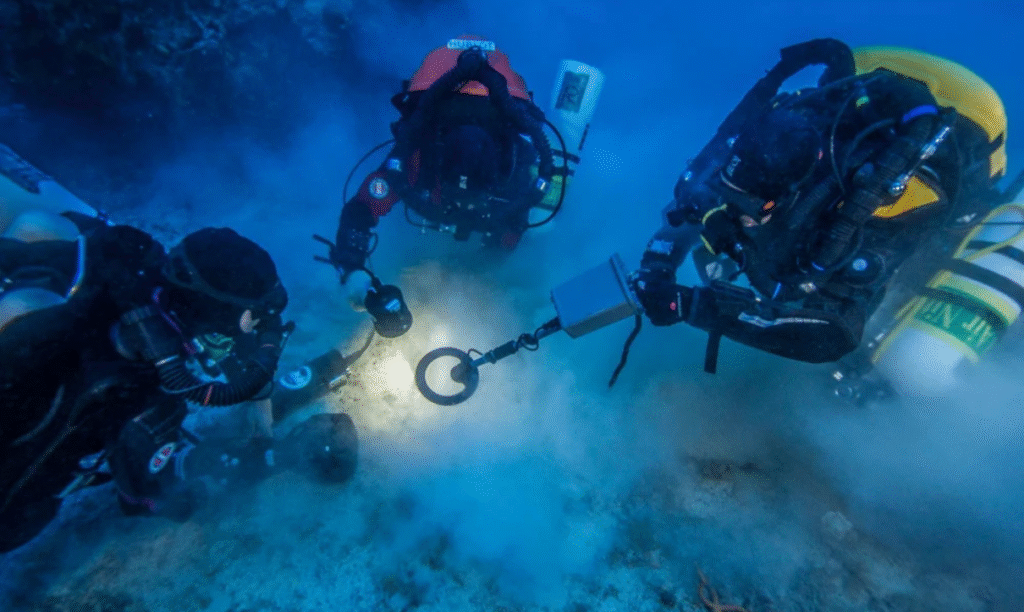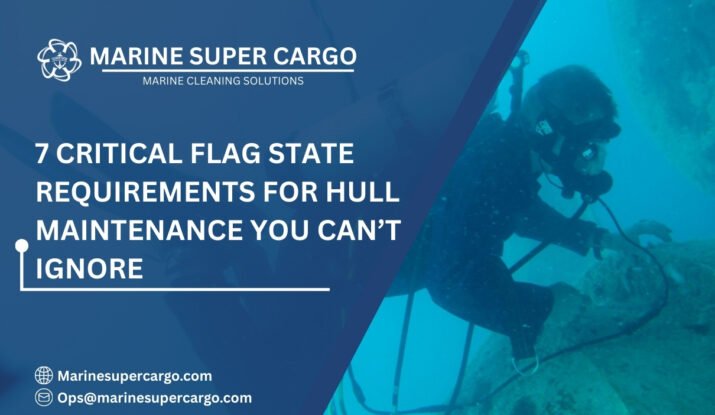Maintaining your ship’s hull is more than just a routine task—it’s a legal, environmental, and economic requirement that can make or break your operational success. Whether you manage a small fleet or operate massive vessels crossing international waters, flag state requirements for hull maintenance are your roadmap to compliance, efficiency, and sustainability.
In this guide, we dive deep into how these rules affect you, what regulators demand, and how proper hull upkeep can save you from fines, delays, and reputational damage. Think of this article as your compass, helping you navigate the sometimes murky waters of maritime compliance.
Why Flag State Requirements Matter
Every ship sails under a flag state—a country where it is registered. More than just an administrative detail, the flag state is responsible for ensuring your vessel complies with international conventions, such as:
- MARPOL (Marine Pollution Convention) – Preventing pollution from ships.
- IMO regulations (International Maritime Organization) – Maintaining safety and environmental standards.
- IMCA guidelines (International Marine Contractors Association) – Providing best practices.
- IAPH (International Association of Ports and Harbors) – Influencing port regulations linked to hull fouling.
Ignoring these obligations is like ignoring the health of your heart—out of sight, but potentially fatal. A poorly maintained hull isn’t just a technical issue; it can increase fuel consumption by up to 40%, spread invasive marine species, and lead to detentions by authorities. Also read about underwater hull cleaning in Hsinking.

Hull Maintenance as the Heart of Seaworthiness
A ship’s hull is its skin against the ocean, constantly battling waves, saltwater, and the relentless attachment of marine organisms. Over time, biofouling — barnacles, algae, and other growth — clings to the surface. This roughness not only spoils a vessel’s hydrodynamics but also increases drag, reducing propulsion efficiency and overall performance.
If left unchecked, the consequences can be severe:
- Fuel bills skyrocket due to excessive resistance and engine strain.
- CO₂ emissions rise, making it harder for shipping companies to achieve their sustainability and decarbonization goals.
- Regulatory non-compliance may lead to hefty fines, reputational damage, or even vessel detentions at critical ports.
This is why Flag state requirements for hull maintenance are more than just bureaucracy — they are a framework that safeguards vessel efficiency and environmental responsibility. By following these rules, shipowners not only reduce operational risks but also extend hull lifespan and avoid costly repairs.
Moreover, Flag state requirements for hull maintenance are increasingly aligned with international efforts such as IMO’s biofouling guidelines and MARPOL’s emission standards. This means compliance is not just about passing inspections; it’s about playing a part in global sustainability initiatives.
Ultimately, Flag state requirements for hull maintenance act as a compass for responsible ship management. They ensure that vessels remain seaworthy, eco-friendly, and economically viable — balancing safety, compliance, and long-term operational success.
Core Flag State Requirements for Hull Maintenance
Here are some critical areas where most flag states enforce rules:
Certification and Documentation
Ships must carry proper maintenance records to prove inspections and cleaning — think of this as the logbook of your ship’s “health check-ups.” These records serve as evidence that the vessel complies with Flag state requirements for hull maintenance, which are designed to protect both operational efficiency and marine ecosystems.
Maintenance schedules are often aligned with Dry Docking timelines, ensuring a systematic approach. Inspections conducted by Recognized Organizations (ROs) certify that Flag state requirements for hull maintenance are consistently met.
Non-compliance isn’t just about failing an inspection — it can invalidate insurance coverage and expose shipowners to financial and legal risks. That’s why many operators rely on trusted partners like CleanShip.co, whose expertise in underwater hull cleaning ensures vessels meet the highest standards. Choosing CleanShip.co helps shipowners stay compliant while improving efficiency and sustainability.
Inspection Frequency
Flag state authorities typically require:
- Underwater surveys are conducted during each dry docking (every 2.5–5 years).
- Intermediate inspections, sometimes using divers or remotely operated vehicles (ROVs).
These inspections detect hull damage, corrosion, and biofouling growth early.
Hull Fouling and Anti-Fouling Systems
- IMO’s Antifouling Systems Convention regulates harmful paints like TBT (tributyltin).
- Flag states demand eco-friendly coatings and regular cleaning schedules.
- Many require immediate cleaning if fouling density exceeds set thresholds.
MARPOL Annex V and Biosecurity Laws
- Ships must prevent the transfer of invasive marine species across waters.
- Improper hull maintenance has directly led to invasive outbreaks worldwide.
- MARPOL and certain national regulations enforce cleaning before entry into sensitive waters.
Port State Control (PSC) Synergy
Even if flag states are lenient, PSC inspectors in foreign ports can enforce standards. Detentions for hull fouling are rising in ports like New Zealand and Australia.
Penalties for Ignoring Requirements
The consequences of neglecting flag state requirements for hull maintenance can be brutal:
- Heavy fines under MARPOL for pollution offenses.
- Ship detentions by PSC, leading to delays and losses.
- Loss of charter contracts, as clients demand eco-compliance.
- Increased operational costs, with higher fuel bills draining profits.
It’s the maritime equivalent of skipping medical checkups until you end up in the hospital.
Environmental and Economic Benefits of Compliance
Complying with hull maintenance rules isn’t just about avoiding punishment—it’s about unlocking benefits:
- Fuel Efficiency: A clean hull can reduce fuel costs by 10–40%.
- Lower Carbon Footprint: Essential for meeting IMO’s GHG 2030 reduction targets.
- Operational Reliability: Reduced downtime from unexpected damage.
- Enhanced Reputation: Meeting international best practices enhances your brand.
Think of these benefits as a strong wind behind your sails—pushing you further, faster, and more cost-effectively.
Future Trends in Hull Maintenance Regulations
Flag state requirements for hull maintenance are evolving as global focus shifts toward sustainability. Key upcoming trends include:
- Digital Monitoring: Use of hull performance monitoring sensors to track fouling in real-time.
- Robot-Assisted Cleaning: Autonomous underwater vehicles offering eco-friendly cleaning.
- Stricter Biofouling Laws: Australia, California, and New Zealand are paving the way.
- Green Fuel Compatibility: Hull cleanliness tied to future fuels like LNG, methanol, and ammonia.
The future ship will likely need “smart skin”—self-healing coatings and AI-based monitoring to keep hulls smooth, safe, and sustainable.

Best Practices to Stay Ahead
To meet flag state requirements for hull maintenance proactively, shipowners and operators should:
- Create a planned maintenance schedule backed by digital logs.
- Use IMO-approved antifouling coatings.
- Conduct regular underwater inspections, not just during dry dockings.
- Partner with certified cleaning providers to ensure compliance.
- Train crew on fouling risks and record-keeping.
By treating hull maintenance as part of your vessel’s lifeline, you not only comply—you thrive.
Conclusion
Meeting flag state requirements for hull maintenance is not optional—it’s your lifeline to safe, efficient, and compliant shipping. A clean hull saves fuel, reduces emissions, and keeps regulators off your back. Most importantly, it safeguards both your business and the marine environment.
Key Takeaways:
- Hull maintenance compliance is mandatory under IMO, MARPOL, and flag state law.
- Ignoring it leads to fines, detentions, and economic losses.
- Future trends demand smarter, greener, and more proactive solutions.
If you want hassle-free compliance and advanced hull cleaning solutions, CleanShip.co offers trusted expertise to keep your fleet smooth, green, and compliant.
FAQs:
Q1. What are flag state requirements for hull maintenance?
They are rules set by a ship’s registered country to ensure hulls are kept clean, safe, and compliant with international standards like IMO and MARPOL.
Q2. How often should hull maintenance be carried out?
Typically, during every dry docking (2.5–5 years), with interim underwater inspections depending on fouling levels and flag state rules.
Q3. What happens if ships ignore these requirements?
Non-compliance can lead to fines, detentions, higher fuel costs, and reputational damage in both domestic and international shipping markets.
Q4. Do all flag states have the same hull maintenance rules?
Most follow IMO and MARPOL, but some have stricter biofouling and antifouling standards, especially in countries with sensitive marine ecosystems.
Q5. What innovations are changing hull maintenance?
Smart coatings, robot cleaners, and performance monitoring systems are the future, helping shipowners stay compliant and reduce costs dramatically.


